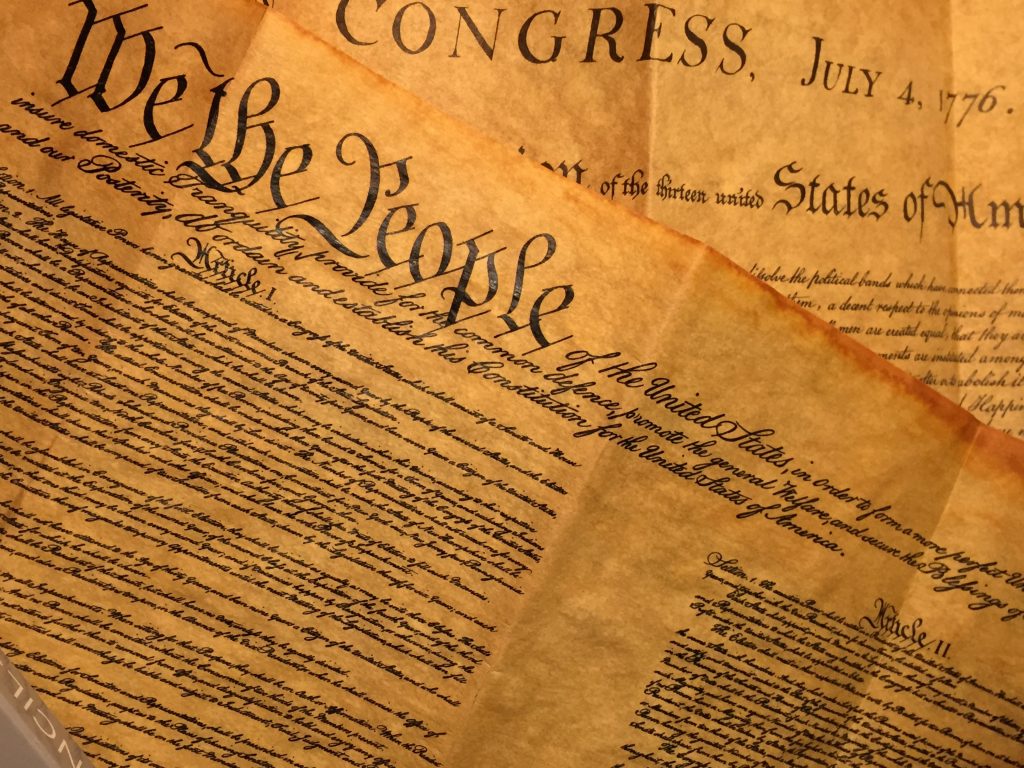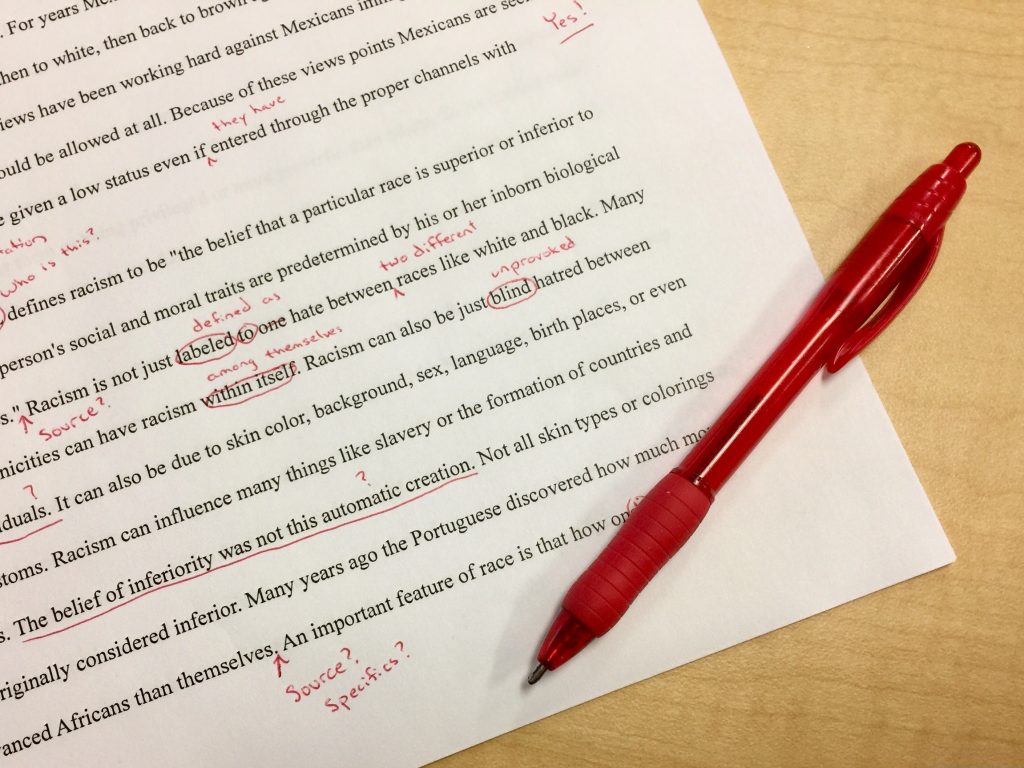We strive to keep the information shared in our blog posts accurate and current. However, these postings provide information of a general nature and may not apply to your particular circumstances. You hold Burgess Strategic Marketing Services harmless and immune from liability in the event that you choose to take actions based on any information and recommendations included in our blog posts.
Latest news from our blog
Core Values
Dec. 22, 2025 — Two classes in “Entrepreneurship and Advanced Marketing” welcomed me as their guest speaker at a local high school this month. Among the topics we covered was the importance of including core values in a business plan.
Core values state the guiding principles that will govern how you strive to run your business. They say how you will conduct yourself in your business dealings, how you will treat your customers, your employees and other stakeholders.
Core values help you to make decisions by pointing you toward the course of action most consistent with your guiding principles.
The two high school classes worked in teams to solve marketing exercises that I had prepared for them. One of these exercises involved deciding whether to sell a “lemon” at a price she couldn’t refuse to a woman shopping for a motor vehicle.
Both teams conducting this exercise decided not to offer the woman the “lemon” because their core values wouldn’t allow them to sell her a vehicle unsafe to drive.
This week, billions of people are celebrating the birth in Bethlehem of the greatest teacher of core values ever known.
Which core values will guide you into the new year?

The Buzz about Teamwork
Bees stung me twice during my childhood.
The first time, I was walking atop a hollow log containing a hidden beehive. Angered at my stomping on their roof, the bees fiercely retaliated. The second time, while sitting on the lawn in the backyard, I accidentally placed one hand directly on top of a bee. Miffed at my invasion of its personal space, that bee retaliated, too.
Stung by those two painful experiences, I hated bees for many years afterward. My attitude toward bees has mellowed, however, since I’ve learned that they pollinate flowers.
Nearly every day this summer, I faithfully have watered the front yard garden to nourish the mixed flower seeds planted there this spring. Many mornings, I’ve noticed a big, black-and-yellow bumble bee busily flitting from bud to bud.
That bumble bee and I have been engaged in an unlikely team effort toward the goal of a beautiful garden. While I’ve been nourishing the flowers by watering their roots, the bumble bee has been pollinating the buds to make them bloom.
Now as summer turns into fall, my front yard garden displays a colorful array of zinnias, cosmos, bachelor’s buttons, marigolds, daisies, sedum and obedient plants in full bloom.
Bees and I have little in common. We keep a respectful distance between us. But through the mysterious ingenuity of the Creator, bees have talents that I lack. For example, these winged wonders can fly!
Our unlikely teamwork has helped to produce a little plot of beauty for neighbors and passersby to enjoy. Some mornings when I spot the bumble bee at work, I whisper to it, “Thank you, little buddy. Good job!”
In your work life, you are likely to encounter people who don’t look like you, don’t talk like you, don’t act like you and maybe don’t even particularly like you but who share values in common with you. Instead of avoiding them, consider combining their complementary talents and expertise with your own to serve a common cause.
You might find that by teaming up with someone vastly different from you, you’ve formed a honey of a partnership.
Copyright © 2025 by Sandra J. Burgess

Thank you for our 39th anniversary!
September 4, 2025, marks the 39th anniversary of Burgess Editorial Services (dba Burgess Strategic Marketing Services). Thank you to all of the clients, colleagues, family, friends and competitors who have kept us striving for continuous improvement. Without your support and the grace of the Creator, we would not be celebrating nearly four full decades in business.
We welcome referrals to new clients as well as more work from those of you who are our current and former clients. Contributing to your organization’s success by applying all of the expertise and experience we have gained during the past 39 years would be our delight.

The comma and the second amendment
The first 10 amendments to the United States Constitution, known as the “Bill of Rights,” were ratified on December 15, 1791. Americans have been arguing over the meaning of the second amendment ever since. That’s 234 years of controversy about 27 words, three commas and one period.
I contend that misplaced commas are the culprits. They have left this poor amendment mangled, maligned, misconstrued and vulnerable to shifting interpretations.
Our nation’s founders adopted the second amendment exactly as written below:
“A well regulated Militia, being necessary to the security of a free State, the right of the people to keep and bear Arms, shall not be infringed.”
That last comma doesn’t belong there at all. It interferes with the smooth flow between the subject of the sentence, “right of the people,” and the verb form, “shall not be infringed.”
Placement of the first comma causes most of the confusion. If our founders meant that “because a well-regulated militia is necessary for the security of a free state, therefore the right of the people to keep and to bear arms shall not be infringed,” then the first comma isn’t needed. It gets in the way of the clear meaning that the reason for a free people to keep and to bear arms is to maintain a well-regulated militia.
Reinsert that first comma after “militia,” and the sentence becomes an awkward statement open to a variety of different interpretations — hence the 234 years of controversy.
My point isn’t about whether everyone or only well-regulated militias should have the right to bear arms.
My point is that punctuation isn’t a trivial afterthought in a well-crafted sentence. It’s essential to ensure that people understand what we really mean when we communicate in writing.
Let’s quickly review the rules of English grammar regarding commas:
1) In a sentence containing two independent clauses separated by a connecting word such as “and” or “but,” place a comma at the end of the first clause, immediately preceding the connecting word. Remember that an independent clause includes a subject, an object and a verb such that the clause could stand alone as a complete sentence if it were not connected to another independent clause.
Example: “I went to the grocery store, and I bought a dozen eggs.”
(Exception: If one or both of the independent clauses already contains one or more commas, then use a semicolon instead of a comma to separate the two clauses.
Example: “I went to the hardware store; and I bought a flashlight, three lightbulbs, a snow shovel and a pack of AAA batteries before the blizzard hit.”)
2) In a sentence with multiple adjectives immediately preceding a noun, place a comma after each adjective except the last one.
Example: “That is a big, fat, sassy porcupine!”
3) Insert a comma after each item in a series except between the last two items if a connecting word already separates those two. (The semicolon exception applies here as well if there is already a comma in one or more of the items in the series.)
Example: “These are the items budgeted for next month’s purchases from the office supply store: five reams of copy paper, six black toner cartridges, three color toner cartridges, 10 manila folders and a dozen marking pens.”
4) Insert a comma before and after a nonessential clause or phrase that interrupts sentence flow.
Example: “I went to the office supply store, which was two blocks away from home, and put the items purchased on the company credit card.”
5) Separate items in dates and addresses with commas.
Example: “On Thursday, July 4, 1776, our country’s founders signed the Declaration of Independence at 520 Chestnut Street, Philadelphia, Pennsylvania.”
6) Insert a comma following introductory words and phrases, including after the salutation in an informal letter.
Example: “Hello, Juan, …. Will you be ready to present your proposal during our staff meeting on Tuesday morning?”
7) Insert a comma following proper names that precede academic degrees, professional titles, etc.
Examples: “Susan Smythe, PhD, Director of Human Resources” and “Y. J. Wong, Jr., CPA.”
8) Insert a comma to introduce or to follow a quotation that includes attribution for the source quoted.
Example: “Early to bed and early to rise makes a man healthy, wealthy and wise,” said Benjamin Franklin.
(Exception: Do not insert a comma following a quotation that ends with a question mark.)
These are common reasons to use a comma. For additional, more obscure reasons and a detailed tutorial on comma usage, check out the latest edition of a textbook about English grammar and composition.

Troy Nature Society elects Burgess and Ahlbrand to its Board of Directors
The Troy Nature Society elected Sandra Burgess, owner of Burgess Strategic Marketing Services, and Kathryn Ahlbrand, an associate attorney with Varnum, LLP, to three-year terms on its Board of Directors during the Society’s annual meeting on April 24, 2025.
“I look forward to working with the dedicated staff, volunteers and fellow Board members of the Troy Nature Society to make the Stage Nature Center that the Society manages more widely known, more often visited and more strongly supported,” Burgess said.
For the Troy Times news story, go to: Troy Nature Society elects new board members. For more information about the Stage Nature Center, go to https://stagenaturecenter.org.

“Is it somebody important or just a customer?”
“There’s a phone call for you,” a fellow employee told the clerk at the checkout counter in a department store where I was waiting in line to buy gifts one holiday season.
“Is it somebody important or just a customer?” the clerk asked.
I felt puzzled, annoyed, angry, ready to drop my merchandise in a huff and to leave the store without buying. Observing the expressions of other customers in line with me, I suspected that they had the same reactions.
You won’t be surprised to learn that the department store eventually fell into financial difficulties.
I’m reminded of the wise words of Napolean Hill, “It is worth remembering that customers are the most important factor in any business. If you don’t think so, try to get along without them for awhile.”

Copywriting tip
For business writing, prefer clarity of meaning to elegance of expression. A prospective customer who can’t understand what you’re selling or how to benefit from it is unlikely to buy from you.

Try a word game
If you can’t resist using big words, have fun and build your vocabulary by playing “Blossom” here. This game rewards you with high scores for spelling words containing many letters.

Why excellent editing is like a car wash
View as PDFYour draft text of that brochure, speech, news release, journal article, annual report or personnel manual is done. Now, it’s ready for editing.
Can you just click the “Spelling & Grammar” icon on the “Review” menu in MS Word, sit back and relax while the computer program edits your document for you? Well, you can. Don’t count on that “quick-and-easy” method to give you a well-edited document that will keep your readers interested though.
Excellent editing involves a multistep process that thoroughly scrubs your manuscript much like a car wash cleans your vehicle.
The first high-pressure spray of water in a car wash clears off loose dirt and mud splatters. The first round of editing fixes obvious formatting errors. Did the font change from paragraph one to paragraph two when that wasn’t supposed to happen? Are there huge gaps of white space between words? Did the text skip a line in the middle of a sentence?
Suds and soft brushes scrub your vehicle during the second round of cleaning. Round two of the editing process is the spell-check. An excellent spell-check goes beyond just spelling each word correctly. Does the word have multiple correct spellings? If so, which one is the dictionary’s preferred spelling? Which one is appropriate for your audience? What are the different definitions for the word? Do any of those definitions really fit what your document is trying to say, or would a different word convey your meaning better? Should Mr. Smith’s name be spelled “Smythe?” Is “J.” his correct middle initial?
Some car washes call the third round of cleaning a “bottom blast.” A high-pressure spray clears the embedded grime off your vehicle’s undercarriage. The next round of editing delves deeper into your manuscript to reword garbled grammar and to get rid of redundancy. Now your prose is looking better, but it still won’t wow your readers.
Round four of the car wash rinses off the suds and leaves your vehicle clean but dull looking. In round five, blowers dry the dampness leftover from the rinse cycle. Then round six applies liquid hot wax to polish your vehicle to a brilliant shine. A few more rounds of editing polish your document so that it doesn’t just say what you want to say but does it with impact. Long sentences break into shorter ones. Limp sentences perk up as active voice replaces ho-hum, passive voice. Clarity of meaning replaces inconsistent statements. Out go the trite expressions. In come attention grabbers that give your document its unique personality. Smooth sentence flow polishes your document to a high gloss.
Car wash workers use soft rags in round seven to mop up residual water droplets from your windshield. Proofreading in the next round of editing mops up any remaining errors. Maybe a comma is missing from a string of adjectives modifying a noun. Maybe a proper name is capitalized on page three but not on page 17. Maybe a hyperlink in a footnote has two letters in the URL transposed so that “Page not found” appears when you click on it. Maybe the citation in that footnote is incomplete according to the style guide that you’re using. Maybe a check for accuracy reveals that the historical incident described on page nine didn’t happen in the 18th Century but in the 19th Century.
Many car washes offer free vacuum stations where you can suction the grit out of your floor mats, the dust off your dashboard and the pet hair from your cushioned seats. The final round of proofreading goes deep into the interior of your document to clean up anything missed earlier. The pesky typo that eluded all previous rounds finally reveals itself. That often happens after letting the document sit overnight, then giving it a fresh look the next day.
Now your edited document sings!
Artificial intelligence (AI) can perform many editing tasks and even write documents for you. Excellent editing requires more than that. It needs the human touch of authentic intelligence. It requires the patience and perseverance to keep scrubbing and polishing until your document sings.

Let Burgess Strategic Marketing Services
treat you to a free, initial consultation.
Call 248.680.0773, e-mail [email protected] or go to Contact Us.

